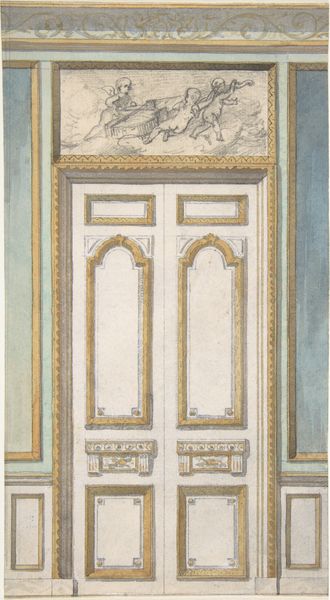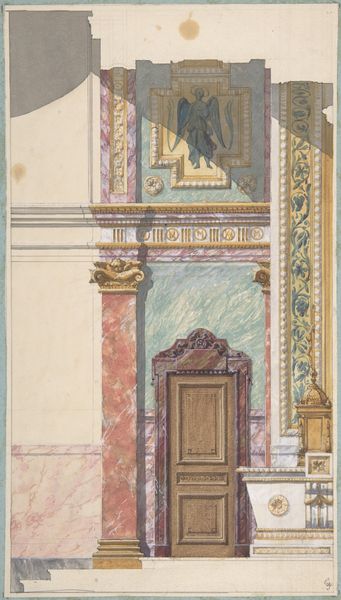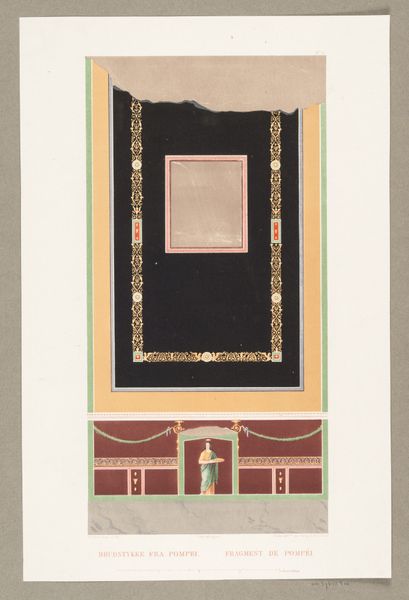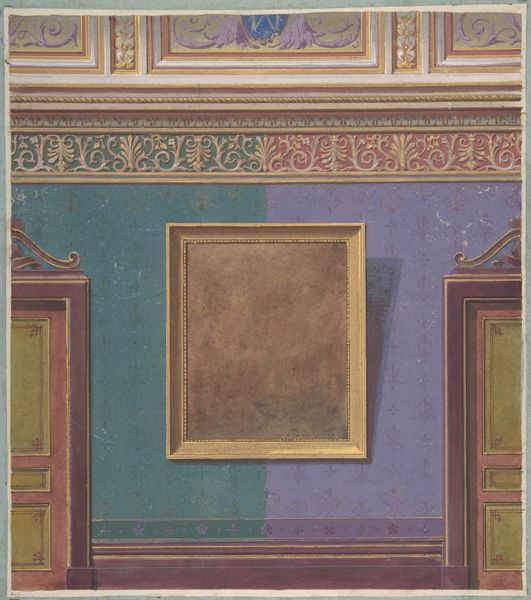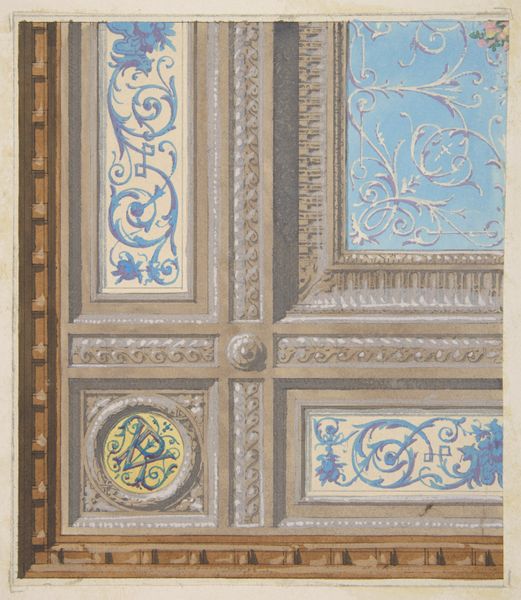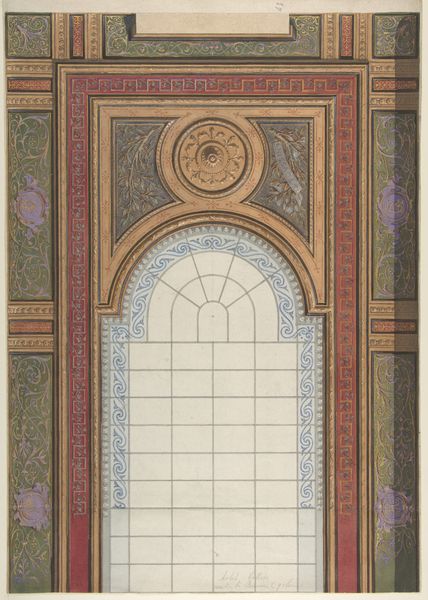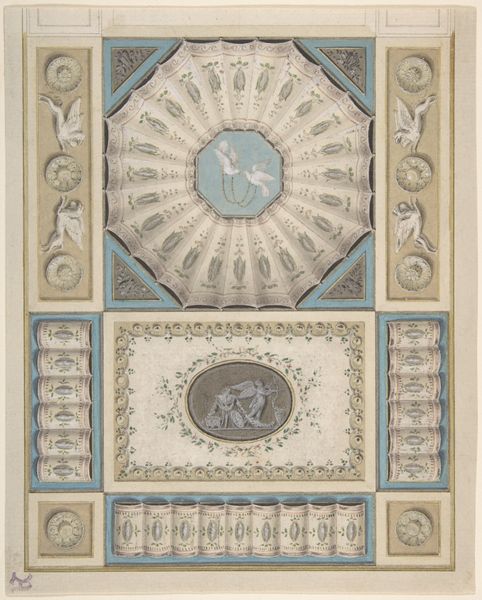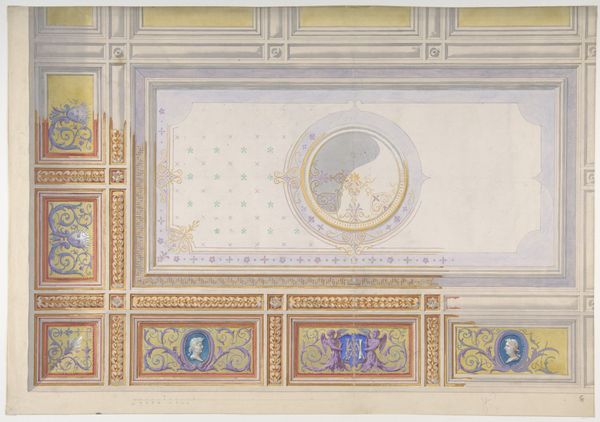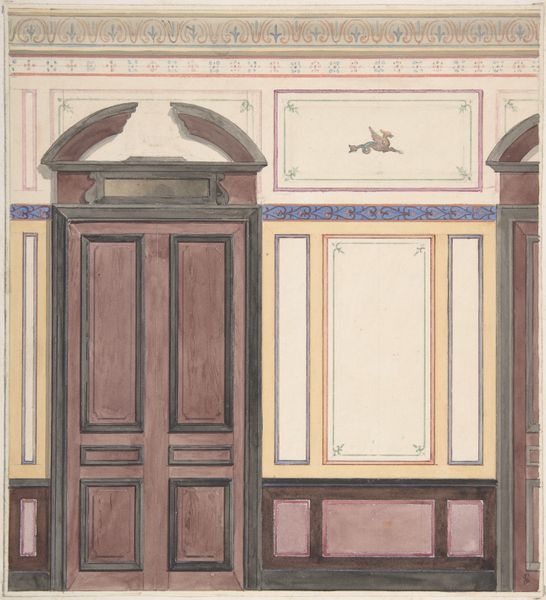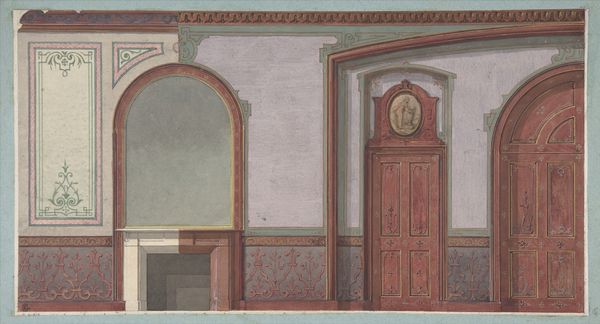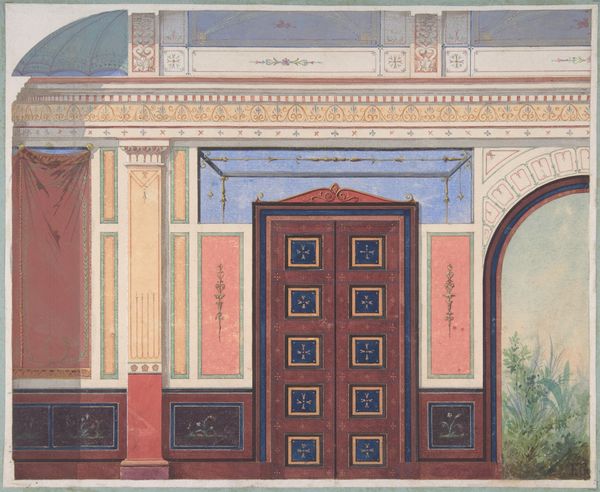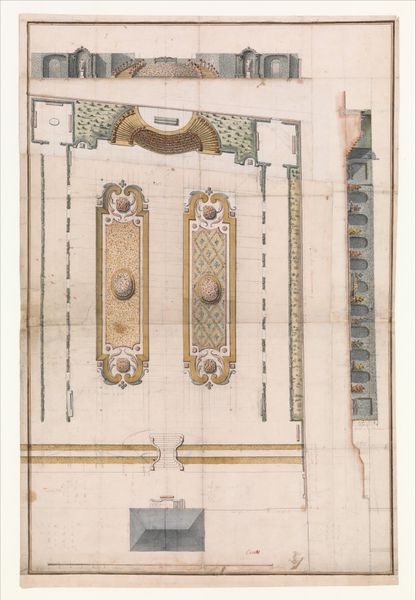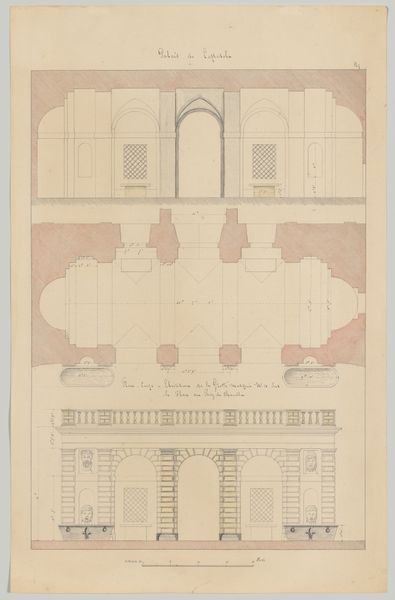
drawing, print, paper, architecture
#
drawing
#
neoclassicism
# print
#
paper
#
geometric
#
arch
#
architecture
Dimensions: image: 14 7/8 x 11 7/16 in. (37.8 x 29.1 cm)
Copyright: Public Domain
Curator: Immediately, I sense such restrained opulence—it’s like looking into a dollhouse scaled for giants. The color palette and the precision in the lines give it this remarkable formal presence. Editor: This work, titled “Design for Fireplace Wall and Ceiling,” likely dates from somewhere between 1850 and 1900. The print on paper provides a fascinating look at late 19th-century Neoclassical interior design, hinting at the societal values embedded within domestic spaces. Curator: Those intricate geometric patterns and archways! Considering this period, there was a resurgence in interest in classical forms and ornament, with a particular emphasis on order and balance. What strikes me is how the design integrates high-end craftsmanship with materials that speak to the growing accessibility of decorative prints. Editor: I agree. The layout—with the fireplace taking center stage below a meticulously ornamented ceiling—speaks to the period’s aspirations to project an image of power and culture within the household, even a facade of this might suggest access to social mobility in a time rife with class tension and aspirations. The chosen medium would be an interesting point of access to explore this tension. Curator: Precisely! And let's consider the labor involved. The production of such a print involved many hands, from the artist-designer to the printmakers and the distributors of these kinds of materials. Each print would have had a trajectory involving potentially dozens of individuals. Editor: Absolutely, this raises important questions about who had access to these designs and who were excluded. Also, this Neoclassical style, as an architectural project, frequently mirrored political movements that centered Western identities as foundational. It’s an interior design plan that simultaneously reinforces cultural hierarchies and creates a highly mediated notion of comfort, that speaks volumes on class division. Curator: Such a discussion about architecture’s relationship to society can become particularly meaningful in museum spaces. In thinking through these material designs, one realizes their significance in shaping our everyday environment and understanding of our world. Editor: Absolutely. Exploring such an artwork as a nexus of cultural power and social ambition enables us to look critically at design, then and now.
Comments
No comments
Be the first to comment and join the conversation on the ultimate creative platform.
